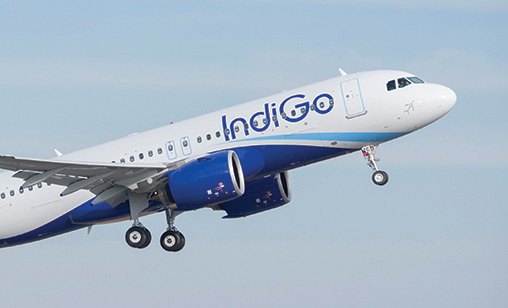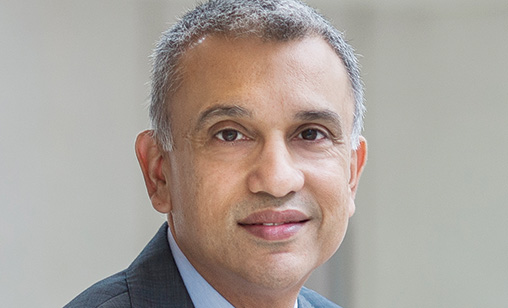News Backgrounder
India’s airlines deserve better regulators
It is the world’s fastest growing airline market with traffic numbers reporting its 50th consecutive month of double-digit growth yet India’s airlines are reporting massive losses. Chief correspondent, Tom Ballantyne, reports on the crisis facing India’s airlines.
October 1st 2018
Failure to even raise a bid for debt-ridden flag carrier, Air India, epitomizes the problems of the nation’s aviation sector. Read More » A grossly over-priced target for the carrier complicated by special interest ties doomed the sale of 76% of the airline.
But that is the least of the government’s problems when it comes to aviation. The country’s carriers are expected to post combined losses of up to $1.9 billion for the financial year ending March 31, 2019 because of a weakening currency, higher fuel prices, brutal price cutting and excessive government taxes and charges.
 |
The situation has become so serious that the secretary of the Ministry of Civil Aviation, Rajiv Nayan Choubey, has admitted the government is framing a relief package to offset mounting losses at carriers.
It is reported to include one more cash injection to keep Air India open for business even though the carrier has debts of $8 billion and counting after a reported loss of nearly $830 million for the year ended March 31.
Speaking at an International Aviation Summit in New Delhi last month,Choubey said the government would offer Air India a state-guaranteed $294 million loan and an equity infusion of $120 million to keep it going following its failure to attract private investors,
India’s privately owned airlines also are losing money. Jet Airways reported a $189 million loss for the three months to June 30 and the country’s largest carrier, LCC IndiGo, saw its profits plunge 97%, to just over $4 million, in the same period.
It is estimated by analysts that India’s airlines, including Air India, will need additional capital of $3 billion in the near term to shore up their balance sheets.
This grim situation has developed against a back drop of rapid growth and boundless opportunity. The International Air Transport Association (IATA) said last month, that in 2010 79 million people traveled to/from/or within India.
Last year that figure had doubled to 158 million and is forecast to triple to 520 million passengers a year by 2037. India is close to becoming the world’s third largest domestic market after the U.S. and China. Its domestic load factor has achieved a record high of 90%.
 |
In 2017, India reported passengers made 98 million domestic journeys, which was equal to 7.3% of the nation’s population. Domestic airport pairs have reached 700, a 50% increase over three years ago. LCCs account for about 70% of domestic seats.
The country’s international market is growing more slowly than the domestic sector. In 2017, passengers made 60 million international journeys to/from India. LCCs secured 25% of that market.
What is preventing Indian airlines from converting this huge passenger growth into profits? IATA director general and CEO, Alexandre de Juniac, said at the summit that “India’s carriers are suffering a ‘double-whammy’ of steeply rising fuel costs and a decline in the value of the Indian Rupee.
“The rise in fuel costs is particularly acute for Indian carriers because fuel makes up 34% of their operating costs, well above the global average of 24%.”
India is one of the world’s cheapest domestic airline markets. It is common to pay US$50 for a one-way ticket on the two-hour flight between Mumbai to Delhi. “It is easy to find Indian passengers who want to fly, but it’s very difficult for airlines to make money in this market,” said de Juniac.
“India’s social and economic development needs airlines to be able to profitably accommodate growing demand. We must address infrastructure constraints that limit growth and government policies that deviate from global standards and drive up the cost of connectivity.”
 |
IATA urged India to introduce transparency in fuel pricing and reduce excise duty on fuel, policies the airline industry has advocated for years. SpiceJet chairman, Ajay Singh, told summit delegates the industry is “in great stress”. Jet Airways CEO, Vinay Dube, said the rise in the price of Brent fuel, a depreciating rupee and a resulting mismatch between high fuel prices and low fares have adversely impacted the Indian aviation industry.
Brent crude has risen 50% in the past year and the rupee recently touched a record low of 70 to the U.S. dollar. Indian airlines are charged taxes of up to 44% on jet fuel, the highest in Asia.
The key challenge faced by Indian airlines on the cost front is that 60%-70% of expenditure is exposed to fluctuations in oil prices and currency markets,” said CAPA consultant, Binit Somaia. “In some instances, airlines also are charged goods and services taxes on airline MRO. It makes domestic [MRO] work uncompetitive.”
Summit speakers re-emphasised the need for a national master plan to develop efficient and digitally equipped airports to accommodate Indian aviation expansion including expansion of civilian airspace. India has announced it will build 100 airports at an estimated cost of $60 billion in the next 10 to 15 years, but although the industry doubts the target will be achieved.
IATA’s chief economist, Brian Pearce, said the fundamentals supporting Indian market growth are strong. By 2036, India’s population is expected to reach 1.6 billion with average incomes to rise to almost $5,000 per person, a five-fold increase from 2006). An International Air Transport Association study of Indian aviation forecast: • “Indian middle class households should reach 20% in 2036 from 2% in 2006. IATA said domestic markets would continue to drive industry growth. Of the 359 million additional passengers expected to fly in 2036, 228 million would travel on domestic flights and 131 million on international journeys. By 2026 India will be the third largest air transport market in the world compared with seventh place this year. • A baseline growth rate of 6.1% a year should result in a market of 520 million Indian passengers in 2037. Globally, liberalization and policy stimulus could see India’s growth rate rise to 9.1%, which would means nearly 900 million passengers a year by 2037. Equally, protectionist and other negative policy impacts globally could hold India’s growth back to 4.9% and a 400 million passenger market by 2037. • In the last five years, India has risen from 132 to 100 on the World Bank’s Ease of Doing Business survey to 100. Continued improvement in this area will be critical to sustainable growth of aviation, IATA believed. • India has improved its ranking in the Forum’s Travel and Tourism Competitiveness Index from 52 in 2015 to 40 last year. Improvements in visa policies, infrastructure and preservation of monuments have assisted this rise. Continuous improvements in these areas as well as in human resources development, airport infrastructure density, and tourism infrastructure are among the areas that could further enhance India’s competitiveness. • Meeting the significant growth potential of Indian aviation will also create challenges for the airlines, its industry partners and policy-makers. For example, this will require the right type of infrastructure at the right time and in the right place. Equally, the broader business and policy environment should not impose hurdles to growth and reduce the benefits aviation can deliver to the nation. The industry, its supply chain partners and the government and policy-makers have a clear mandate to work in collaboration towards the common goal of ensuring that aviation’s economic and social benefits are fulfilled. |